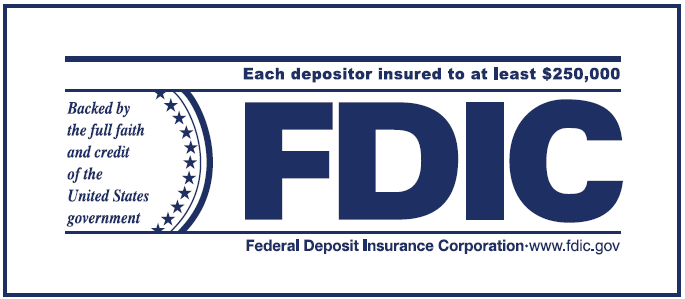The FDIC (Federal Deposit Insurance Corporation) currently insures deposits up to $250,000 per account. You can’t miss the FDIC sign when you are making your deposit at the bank.  However, most people do not know that the FDIC currently has only 0.45 percent in their deposit insurance fund. (as of December 31 , 2012).
However, most people do not know that the FDIC currently has only 0.45 percent in their deposit insurance fund. (as of December 31 , 2012).
What does this mean to you? For every dollar that you deposit into an FDIC insured account, less than one penny is held in the FDIC’s Deposit Insurance Fund (DIF)! For every $100 you deposit there, they have just forty-five cents is in the insurance fund. The FDIC’s goal (as mandated by Dodd-Frank Act) is to reach 1.35% reserve ratios by September 30, 2020. This would mean that they have $1.35 for every $100 you have on deposit. See the recently published memorandum by the FDIC.
Banks only have to hold a fraction of their depositor’s money. What does this mean? If you deposit $1,000 into your bank account, the bank now has the legal ability to loan out 90% of this money to someone else. We know that there is approximately just 5% of American dollars circulating as actual currency.
In banking, they are only required to hold a fraction of your money in reserve. They can legally loan the rest out. So if they take in $10, they can loan out $9 of your dollars to someone else. Banks are inherently unstable as evidenced by the fact that between the years of 1981 to 1996 approximately 2,900 banks failed in the U.S. More recently, hundreds of banks have failed since January of 2008. Click on the following Link HERE to visually track bank failures over the last few years. Since 2008 there have been over 386 bank failures. There were ten bank failures in the last two months. Go HERE to view the FDIC’s official bank failure list.
Many people are unaware that if just a small percentage of their bank’s clientele demanded to withdraw cash from their bank all at the same time, the money isn’t there. So if everybody did a run on the bank, the money’s not there. Remember what happened to George Bailey in “It’s a Wonderful Life”? That’s a very real scenario that could happen again if we hit major economic turbulence.
IF there is any major shake in economic confidence in any way, there is a very small portion of that money that is actually paper, Federal Reserve notes. The rest is digital money that exists only in electronic form. It’s nothing more than a number.
On the FDIC’s own website, they list out financial vehicles that are insured by the FDIC and financial products that are not. One such institution they list as not FDIC insured are insurance products. SEE: http://www.fdic.gov/consumers/consumer/information/fdiciorn.html
David’s talks about the history of the Insurance Industry and why insurance companies are more stable than fractional-reserve banks. One example is that Insurance companies hold a dollar-for-dollar reserve on any deposits from their policy holders.
In the early 1900’s, 50% of American’s discretionary savings were held with life insurance companies. In fact, the year that ten-thousand banks failed, it was the insurance industry that provided the cash to the banks to help them get back on their feet, not the federal government.
Listen in as David talks about the FDIC in much more detail.
You can download a sample copy of David’s upcoming book titled “Whose Future Are You Financing? What The Government and Wall Street don’t want you to know. To read the first 16 pages click HERE.
David can be reached at 501-218-8880 or by email: David@DLShowOnline.com
